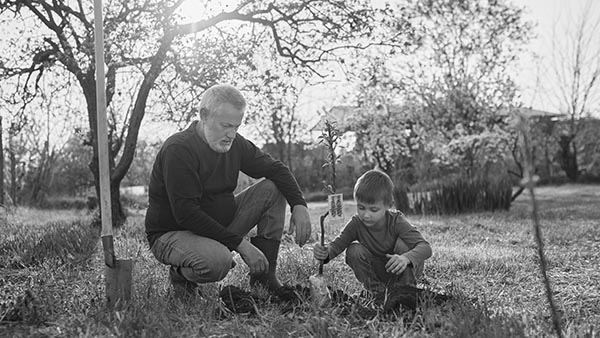Slowly rising to obscure my view of Europe’s largest urban wetlands, the two blocks of flats opposite me have taken on an increasingly finished aspect recently.
Balconies affixed, the cranes have been dismantled and, I assume, the tasks switch focus to the inside and the exterior landscaping. They are not in isolation. Multiple blocks of flats across this area are at various stages of upward growth, rising inexorably to finally pierce the north London skyline at various points in time and space. Given the anticipated lifespan of a block of flats is around 60 years (and where old age for a building is considered over 50 years), they are going to provide a semi-permanent testimony to the collective decisions of land-owners, town planners, local Councillors, regeneration teams, architects, developers, investors and the like.
I’m left with questions around the liveability of an area in which the existing infrastructure is already creaking. There are plenty of inter-connected public transport services yet their capacity remains capped. Local roads are gridlocked at best.
In this and other areas in London - such as Greenwich or Canada Water - homes are being built at a pace far outstripping the ability of the wider infrastructure to support it. This is not just a London issue; this is an everywhere issue. As someone who lived for some time in a market town, I can recall when government planning regulations limited the parking spaces that could be provided for each new build. An estate of largely four- and five-bed homes offered mostly on-street parking, a patently ludicrous situation in a rural area where multiple car households was a practical necessity.
In lockdown, Covid-19 is forcing many of us to evaluate what we really need from our local neighbourhood; what can we easily access without too much travel? Places to eat, buy groceries, work. Socialise, in time. Places to mix with others, with our neighbours across different floors and blocks. It’s bizarre that ideas like the '15-minute neighbourhood' are gaining traction as a compelling response to the challenges revealed by Covid-19. Is this not an idea that has been present since antiquity? How have we got away from the notion that the geographical footprint that represents our day-to-day lives in some way can’t, or shouldn’t, be contained within a 15-minute walk?
Such long-term decisions bring with them an inevitability of path-dependency. Once we have made decisions to set off down this road, it is simply impossible to reverse course - in just the same way that our historic town and city centres are largely unfriendly for car use, given they were designed for people to move around on foot. Perhaps we are coming full circle and back to the notion that there is no place for the motor vehicle in many of our urban spaces. There is also an opportunity cost to these decisions; once made, we’ve ruled out all other options, not only now but also for the next generation.
We are tying the hands of our children and their children to patterns of land use and a style of living that barely fit today’s needs and which, as the dominant paradigm, is already showing some signs of obsolescence. What will they really be able to change by the time they are the ones making decisions about the places in which we live? In some respects, therefore, we are colonising their future with the decisions we are making today.

And we see this play out across the public sector which, whether implicitly or explicitly, shapes the lives of future generations. It’s not simply decisions around land use, the design and regeneration of the places we live and work, our town and city centres and public spaces, housing and transport infrastructure. These are naturally the more obvious. Teachers in our schools are preparing our young people to face the largely unknown challenges of twenty and thirty years into the future. Social workers are supporting the more vulnerable in society to gain independence and lead independent lives. Health professionals are supporting those at risk of particular conditions to avoid their long-term health impact, through diet, smoking and lifestyle guidance. Firefighters make proactive home fire inspections. Local authorities undertake preventative work with those at particular risk of, say, offending, loneliness or going hungry, whether directly or through their support of community groups and charities.
We called our recent report exploring the value of such longer-term thinking ‘A stitch in time’ for a reason; examples like these illustrate why, through a public value lens, it is vital we take a long-term perspective. Not just to counteract the inevitable short-termism of the political cycle, but because the public sector at its best helps support our own long-term aspirations as citizens as well as shaping the long-term future of our places. Much of what we collectively invest in through our taxes is therefore shaping our collective futures - and yet all too often the mechanisms through which we might be able to influence these processes and decisions remain largely opaque, bureaucratic and inaccessible.
It is one of my hopes for a post-pandemic world that we actively work across our public services to open up such processes and decisions to a wider audience - to all those in the communities that will be impacted, bring a diversity of perspectives and views to bear. Clearly, technology makes this more viable than ever before; to harness the opportunity to rethink the design and liveability of our communities we also need to rethink the way our local public services are funded, organised and delivered. We need to take a joined-up, systemic approach to achieve this.
Indeed, one of the crucial and added-value roles that local authorities, museums and historians provide is as custodian of such change. Without the community equivalent of institutional knowledge, it can seem baffling to judge decisions make a generation ago the experience of today’s reality. Why were certain decisions taken, who took them, what was the intended impact? What happened as a result? Clearly, where there is such a lag between decisions and impacts it can be difficult to evaluate quality or efficacy; accountability becomes difficult as those involved in original thinking and decisions will have moved on or retired.
Yet we have a responsibility to think longer term. To produce the kind of effects that we will need post-pandemic requires us to look not months, nor years, but decades ahead. As the 19th century landscape architect Frederick Law Olmsted said, “I have all my life been considering distant effects and always sacrificing immediate success and applause to that of the future. In laying out Central Park we determined to think of no result to be realised in less than forty years.” That’s not a bad maxim to work by.
Related content
-
A stitch in time: realising the value of futures and foresight
Report
Our guide to thinking about the future differently.
-
Whose future is it? Why every voice matters
Blog
Adanna Shallowe
Any process that seeks to re-imagine the future must be co-designed to be inclusive.
-
Thinking about the future differently
Blog
Ella Firebrace
To solve today’s challenges, we need to think long-term. How can we do that?




Be the first to write a comment
Comments
Please login to post a comment or reply
Don't have an account? Click here to register.